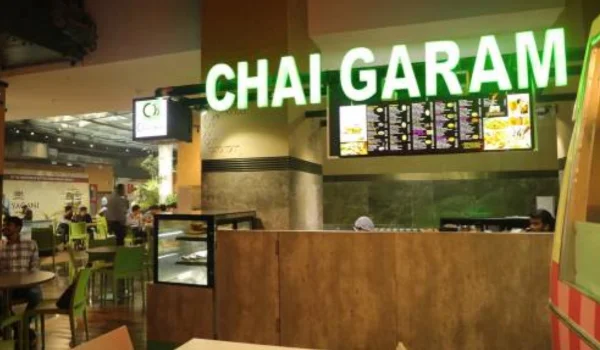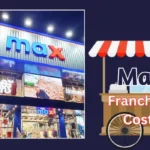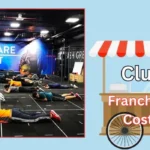Launched in 2008–2010 and now active in over 100 outlets across 30+ cities, Chai Garam is positioned as a budget‑friendly tea café chain serving freshly brewed, handcrafted teas along with snacks like bun maska, sandwiches, and juices. Built on a compact kiosk-to-café format, it offers franchising opportunities across urban locations, educational hubs, malls, and transit nodes.
💰 Investment & Cost Structure
Summary Table
| Franchise Model | Space (sq.ft) | Franchise Fee | Setup & Infra | Total Investment | Royalty / Commission | ROI / Payback Time |
| Kiosk Model | 60–300 | ₹3.5 L + GST | ₹5 L approx | ₹10 L | 4% of net sales | 12–18 months |
| Compact Café | 200–500 | ₹2–5 L (some list ₹3 L) | ₹7–15 L | ₹10–20 L | ~4% of net sales | 12–24 months |
✔ As per FranchiseGoal: kiosk model requires ₹10 L investment (₹3.5 L fee, ₹4 L build-out, ₹2 L interiors, ~₹87K inventory) with royalty 4% and payback in 18–24 months.
✔ FranchiseKhoj concurs: ₹10 L–20 L total estimated with 100–400 sq.ft area and 96% revenue share to franchisee (~4% to brand) with typical ROI 1–2 years.
✔ Breakdown via AfterColleges: café model (300 sq.ft+) expects ₹14 L total investment, 4% royalty, and net profits around 12–17% initially, up to 20% with turnover growth.
🏗 Franchise Model & Support Provided

Franchise Format
- FOFO Model — Franchisee owns and operates the outlet; Chai Garam provides branding, SOPs, supply-chain, and support.
- Formats include indoor/outdoor kiosks, compact cafés (200–500 sq.ft), shop-in-shop or mall units, and mobile carts/trucks in selected locations.
Brand & Operational Support
Chai Garam extends robust infrastructure including:
- Site selection and footfall feasibility
- Store layout, interior design, and branding guidelines
- Operational & kitchen training, SOP manuals, recipe standardization
- Menu-building, pricing strategy, and vendor sourcing
- POS systems, supply chain logistics, and relationship manager support
- Marketing support—local advertisements, digital outreach, promotions.
📊 Financial Projections & ROI
Revenue & Margins
- A typical outlet targeting monthly gross sales of ₹3–3.5 L (₹10K–12K/day) yields gross profit around ₹1.8–2.1 L (assuming 40% raw material cost).
- After deducting staff (₹50K), rent (₹50K), utilities (₹10K), marketing and misc (₹20–25K), and royalty (4% ≈₹13K), net profit is around ₹36K monthly (~12%) initially; can rise to ₹80K (~20%) with ₹4 L turnover.
ROI Timeline
- Payback spans 12–18 months for kiosk model, and 12–24 months for larger café formats, depending on location and operational efficiency.
- FranchiseClaimed returns up to 60% ROI expected for high-traffic sites in top metros.
✅ Eligibility & Ideal Franchisee Profile
Grasp these key criteria:
- Financial Readiness: Minimum ₹10 L for kiosk; up to ₹20 L+ for café formats including buffer capital.
- Location Access: 60–500 sq.ft in high-footfall zones like colleges, malls, busy streets, transit hubs.
- Operational Bandwidth: Capacity to hire/manage 5 staff; strong discipline in SOPs.
- Background: Experience in retail/hospitality helpful but not mandatory.
- Documentation: PAN, Aadhaar, GST certificate, shop lease/licence, FSSAI copy if applicable.
📝 Steps to Apply: Franchise Process Explained
- Initial Inquiry: Visit official Chai Garam website or fill forms on platforms like FranchiseKhoj / FranchiseGoal.
- Screening & Discussion: Company reviews your background, location plan, and investment capacity.
- Site Evaluation: Chai Garam assesses footfall, rental terms, and accessibility.
- Franchise Agreement & Payment: Sign contract (typically 7-year term), pay franchise fee (~₹3.5 L + GST) and infrastructure fee.
- Store Setup & Fit-Out: Complete build-out, décor, installation of equipment and POS within 1–2 months.
- Training: Operations, vendor processes, service protocols—typically 45 days support onsite.
- Launch & Marketing: Soft opening with brand promotions, local marketing push.
- Ongoing Support: Regular field audits, performance reviews, SOP refreshers, supply replenishment.
⚖️ Benefits vs Risks
✅ Advantages
- Affordable entry: ₹10–20 L investment lower than full-scale QSR chains.
- High revenue retention: 96% of gross revenue retained by franchisee.
- Simple operations: Limited menu, minimal inventory, lean staffing.
- Strong brand identity and system support.
- Early breaks: Potential payback within a year, especially in prime locations.
❌ Considerations
- Food business risk: lowest margin cafes often fail without proper support—Reddit analysts note high closure rates and contract lock-ins.
- Royalty commitment: constant 4% royalty impacts net profits during lean months.
- Location is key: even strong brands struggle in poor footfall zones.
- Contract rigidity: franchise deals can restrict exit/transfer; scrutinize clauses carefully.
- Brand dilution risk: many copycat kiosks mimic ‘chai’ branding in local markets—real brand equity matters.
💡 Expert Takeaways: Tips Before You Invest
- Visit existing outlets to assess daily footfall, operation quality, and support level.
- Talk to current franchisees—get firsthand insight into support, ROI, and challenges.
- Clarify royalty model and revenue-share formula before signing.
- Negotiate flexible lease terms and cap rent escalation.
- Ensure buffer capital for 3–6 months before steady revenue.
- Understand exit clauses, renewal costs, and franchise transfer policies.
✅ Quick Franchisee Checklist
- CapEx: ₹10–20 L initial investment
- Space: 60–500 sq.ft based on format
- Staff: 5 to start; lean operational structure
- Agreement: ~7 years renewable
- Royalty: ~4% of net sales
- Return: payback in 12–24 months; net margins ~12–20%
- Documentation: GST, PAN, lease, licenses
🎯 Final Verdict
Chai Garam franchise offers an affordable and structured opportunity to enter the organized tea café sector in India—with modest capital, standardized SOPs, and solid support. ROI can be achieved within 12–18 months for well-located outlets.
That said, success depends heavily on location, operational discipline, and demand—franchise overheads remain even during low-volume periods.

Shashi Kant is the Founder and Editor of BusinessScroller.com, a leading platform for business insights, finance trends, and industry analysis. With a passion for journalism and expertise in business reporting, he curates well-researched content on market strategies, startups, and corporate success stories. His vision is to provide valuable information that empowers entrepreneurs and professionals. Under his leadership, BusinessScroller.com has grown into a trusted source for in-depth articles, customer care guides, and financial expertise.


